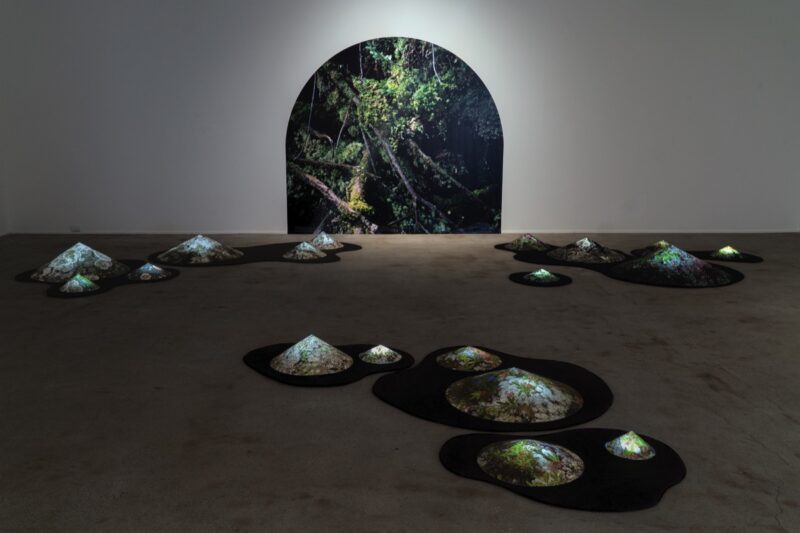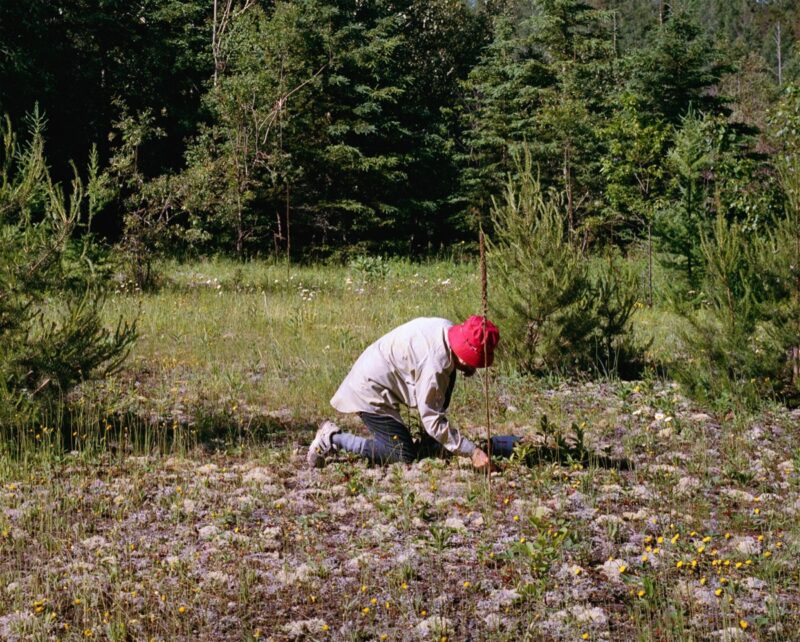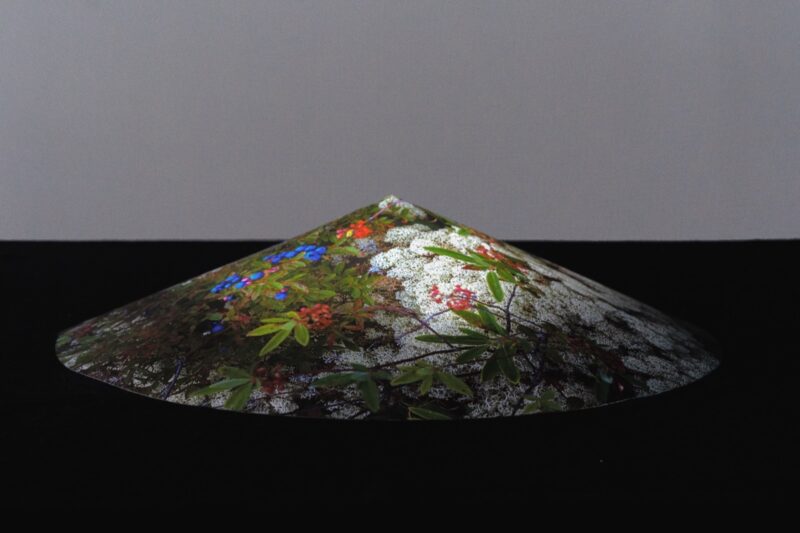[Fall 2024]
Josée Pedneault, Talle
by Laurie Boivin
SAGAMIE, Saguenay
19.01.2024 — 15.03.2024
[EXCERPT]
In the exhibition Talle, presented at Centre SAGAMIE in winter 2024, the artist Josée Pedneault presented a meditative, almost wondrous experience drawn from the sparse, delicate vegetation of Quebec’s northern underbrush. This body of work was produced during the photographic missions organized by Les Rencontres de la photographie en Gaspésie – creative residencies that pair artists with territories in order to offer fresh views of the contemporary Quebec landscape. In this spirit, Pedneault turned away from the grandiose panoramas that are the pride of the Saguenay–Lac-Saint-Jean region in order to gaze at a more discreet natural setting – that of the wild-berry harvest still practised in her native region. Talles,1 as Pedneault defines them in the exhibition essay, “are places where wild fruits grow in abundance; these spots are cherished secrets, jealously guarded, their locations shared . . . with the utmost discretion.” Venturing in search of these unique, almost-miraculous sites, she began her own rediscovery of the woodland heritage of Lac-Saint-Jean, guided by her mother, an experienced picker.
In the series
Cueillir, Pedneault traces with her body the exploratory path forged in harvesting areas by using four maps extracted from Google Earth. She would rush a few metres through alder brush and then return to the trail to make her way to a promising clearing – movements that instinctively reproduced the aimless flight of pollinating insects. The map, usually an accurate data-visualization tool, is here the vestige of an uneven ramble across the land, led by the senses and pickers’ memories. The tension between exactness and approximation is reinforced by the spatial layout of the works in the gallery: printed on a transparent support and installed away from the wall, the images project shadows that create a doubling of paths. The resulting sense of vagueness makes it difficult, or even impossible, to identify the zones explored. The trails are blurred, preserving the anonymity of these valuable plant colonies.
Like the location of the patches of land that Pedneault visited, the identity of the people who guided her in the summer of 2022 remains elusive. In a series of photographs that mix landscape and portrait genres, some images reveal the presence of a few colourful hats popping up through the high grass, whereas in others we see only undergrowth and evergreens. One work in the grouping stands out: a picker kneels on a carpet of lichen, her head down, her hand on the ground, in a pose that evokes gleaning as much as gathering, and it brings to mind the American philosopher and poet Ralph W. Emerson’s words: “In the tranquil landscape, and especially in the distant line of the horizon, man beholds something as beautiful as his own nature.”2 Pedneault shows us a moment of reflection during which the gleaner, her eyes fixed on the apparent calm of the infinitely small, seems to examine the contours of her own inner landscape.
Visitors also had to bend down to better view the luminous sculptures on the gallery floor that compose the epo-nymous installation Talle. Pedneault created an itinerary for us: we were invited to circulate among the rounded forms that bore a resemblance to gleaners’ hats, and to gradually discover a miniature constellation of black-edged planets, each filled with its own rustic flora of moss, ferns, rhubarbs, and wild blueberries. Contrasting with the concrete floor of the gallery, these microcosms evoked the canopies of micro-forests, a kind of new luxuriant ecosystem that has recently sprung up in the urban landscape. They thus attest to the multiplication of municipal and citizen green initiatives and retrace the salutary emergence of small Edens in the apparent gloom of cities. These plant-filled spaces for selfrestoration – with their small food gardens and shelters –seem a bit miraculous. Deep in the forest or in the city, these green refuges reincarnate, ina way, the functions of churches, which today are gradually being deserted.
This meditation on the sacredness of nature ended before an archway that opened onto a blown-up image of a rooted tangle of tiny moss shoots. Playing once again on the scale of presentation, this last photograph operated as a synthesis of the exhibition through which Pedneault invited us to reconnect with the environment and to marvel, once again, at the tiniest bit of vegetation in the landscape. Translated by Käthe Roth
NOTES
1 Translator’s note: In English, talle means “sucker” (in the sense of branches that grow out of the base of trees) or small clumps of vegetation.
2 Ralph W. Emerson, Nature (Boston: James Munroe & Company, 1849), 8.
[ Complete issue, in print and digital version, available here: Ciel variable 127 – SISTERS, FIGHTERS, QUEENS ] [ Complete article in digital version available here: Josée Pedneault, Talle – Laurie Boivin]



